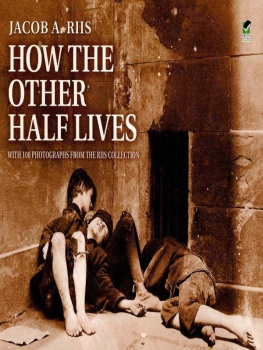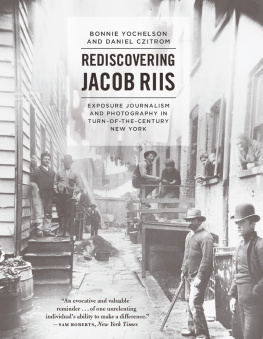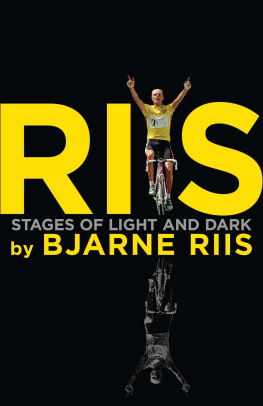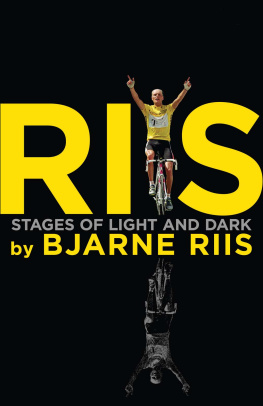DOVER BOOKS ON HISTORY, POLITICAL AND SOCIAL SCIENCE
JEWISH LIFE IN THE MIDDLE AGES, Israel Abrahams. (0-486-43758-2)
CURIOUS MYTHS OF THE MIDDLE AGES: THE SANGREAL, POPE JOAN, THE WANDERING JEW, AND OTHERS, Sabine Baring-Gould. (0-486-43993-3)
THE POLITICAL THOUGHT OF PLATO AND ARISTOTLE, E. Barker. (0-486-20521-5)
LIFE AND WORK IN MEDIEVAL EUROPE, P. Boissonnade. (0-486-41987-8)
THE STORY OF MAPS, Lloyd A. Brown. (0-486-23873-3)
WHATS WRONG WITH THE WORLD, G. K. Chesterton. (0-486-45427-4)
THE RIVER WAR: AN ACCOUNT OF THE RECONQUEST OF THE SUDAN, Winston Churchill. (0-486-44785-5)
GREAT MYTHS OF THE WORLD, Selected and Retold by Padraic Colum. (0-486-44354-X)
MYTHS OF THE HINDUS AND BUDDHISTS, Ananda K. Coomaraswamy and Sister Nivedita. (0-486-21759-O)
THE WORLDS GREAT SPEECHES: FOURTH ENLARGED (1999) EDITION, Edited by Lewis Copeland, Lawrence W Lamm, and Stephen J. Mckenna. (0-486-40903-1)
THE MEDIEVAL VILLAGE, G. G. Coulton. (0-486-26OO2-X)
IRISH FAIRY LEGENDS, T. Crofton Croker. (0-486-46814-3)
THE BOOK OF GREEN QUOTATIONS, Edited by James Daley. (0-486-46781-3)
MYTHS AND LEGENDS OF JAPAN, F. Hadland Davis. (0-486-27045-9)
THE NIGHTLESS CITY: GEISHA AND COURTESAN LIFE IN OLD TOKYO, J. E. de Becker. (0-486-45563-7)
PHILOSOPHY AND CIVILIZATION IN THE MIDDLE AGES, Maurice DeWulf. (0-486-44389-2)
SCOTTISH FAIRY AND FOLK TALES, George Douglas. (0-486-41140-0)
THE ELEMENTARY FORMS OF THE RELIGIOUS LIFE, mile Durkheim. Translated by Joseph Ward Swain. (0-486-45456-8)
THE OLYMPIC GAMES: THE FIRST THOUSAND YEARS, M. I. Finley and H. W. Pleket. (0-486-44425-2)
THE GOLDEN BOUGH, Sir James Frazer. (0-486-42492-8)
THE ANCIENT CITY: A STUDY OF THE RELIGION, LAWS, AND INSTITUTIONS OF GREECE AND ROME, Numa Denis Fustel de Coulanges. (0-486-44730-8)
JEWS AND ARABS: A CONCISE HISTORY OF THEIR SOCIAL AND CULTURAL RELATIONS, S. D. Goitein. (0-486-43987-9)
CHINA: A HISTORY OF THE LAWS, MANNERS AND CUSTOMS OF THE PEOPLE, John Henry Gray. (0-486-42487-1)
MYTHS OF THE NORSEMEN: FROM THE EDDAS AND SAGAS, H. A. Guerber. (0-486-27348-2)
THE MYTHS OF GREECE AND ROME, H. A. Guerber. (0-486-27584-1)
FROM MEDICINE MAN TO DOCTOR : THE STORY OF THE SCIENCE OF HEALING, Howard W. Haggard. (0-486-43541-5)
THE HISTORY OF TATTOOING, Wilfrid Dyson Hambly. (0-486-46812-7)
TATTOOING IN THE MARQUESAS, Willowdean Chatterson Handy. (0-486-46612-4)
THE HORSE IN MAGIC AND MYTH, M. Oldfield Howey. (0-486-42117-1)
A HISTORY OF THE VIKINGS, T. D. Kendrick. (0-486-43396-X)
THE SECRET COMMONWEALTH OF ELVES, FAUNS AND FAIFUES, Robert Kirk. Introduction by Andrew Lang. (0-486-46611-6)
ARAB SOCIETY IN THE TIME OF THE THOUSAND AND ONE NIGHTS, Edward William Lane. (0-486-43370-6)
THE DREAM IN NATIVE AMERICAN AND OTHER PRIMITIVE CULTURES, Jackson Steward Lincoln. (0-486-42706-4)
ON RELIGION, Karl Marx and Friedrich Engels. (0-486-45450-9)
THE LONDON UNDERWORLD IN THE VICTORIAN PERIOD: AUTHENTIC FIRST-PERSON ACCOUNTS BY BEGGARS, THIEVES AND PROSTITUTES, Henry Mayhew and Others. (0-486-44006-0)
TALES OF OLD JAPAN: FOLKLORE, FAIRY TALES, GHOST STORIES AND LEGENDS OF THE SAMURAI, A. B. Mitford. (0-486-44062-1)
HANDBOOK OF WoRLD MYTHOLOGY, Alexander S. Murray. Notes, Revisions and Additions by William H. Klapp. (0-486-44374-4)
TERRORISM: FROM ROBESPIERRE TO THE WEATHER UNDERGROUND, Albert Parry. (0-486-44417-1)
MOHAMMED AND CHARLEMAGNE, Henri Pirenne. (0-486-42011-6)
THE FOREST IN FOLKLORE AND MYTHOLOGY, Alexander Porteous. (0-486-42010-8)
PRIMITIVE MAN AS PHILOSOPHER, Paul Radin. (0-486-42495-2)
OZARK MAGIC AND FOLKLORE, Vance Randolph. (0-486-21181-9)
TEN DAYS THAT SHOOK THE WORLD, John Reed. (0-486-45240-9)
MAORI TATTOOING, H. G. Robley. (0-486-43092-8)
CELTIC MYTHS AND LEGENDS, T. W. Rolleston. (0-486-26507-2)
TRUE IRISH GHOST STORIES: HAUNTED HOUSES, BANSHEES, POLTERGEISTS, AND OTHER SUPERNATURAL PHENOMENA, Compiled by St. John D. Seymour and Harry L. Neligan. (0-486-44051-6)
THE PROSE EDDA: TALES FROM NORSE MYTHOLOGY, Snorri Sturluson. Translated by Arthur Gilchrist Brodeur. (0-486-45151-8)
FOLKWAYS: A STUDY OF MORES, MANNERS, CUSTOMS AND MORALS, William Graham Sumner. (0-486-42496-0)
THE ANNALS, Tacitus. Translated by Alfred John Church and William Jackson Brodribb. (0-486-45236-0)
THE REVOLUTION BETRAYED, Leon Trotsky. (0-486-43398-6)
See every Dover book in print at www.doverpublications.com
PREFACE
TO THE DOVER EDITION
JACOB August Riis, police reporter turned social reformer, fought for the elimination of slum conditions on New Yorks lower East Side more persistently and with greater effectiveness than any of the more conventional social workers and civic reformers of his day. His first book on the subject,. How the Other Half Lives , published in 1890, seared the conscience of prominent New Yorkers and forced reforms upon greedy landlordsamong them men and organizations belonging to the highest social stratum.
Riis, born in Ribe, Denmark, in 1849, had learned something of the craft of journalism when, as a child, he helped his father, a teacher in a Latin school, prepare copy for a weekly paper. It was as an apprentice to a carpenter, however, that he spent four years in Copenhagen, and with this career in mind he left Denmark in 1870 at the age of twenty-one to seek work in the United States.
Economic conditions were at that time beginning to worsen in America, and as the depression deepened, Riis experienced the precariousness and degradation of the hapless immigrant: often jobless, hungry, and homeless, he was at times on the verge of suicide. More than once he spent the night in a police lodging-house. For months he tramped city streets and rural byways in a vain search for work, doing chores for meals and sleeping in barns and alleys, even walking from New York to Philadelphia to obtain work from a Danish family he knew. After more than three years of this ordeal he managed to find employment with a news association in New York and was launched on a journalistic career.
In 1877 he became a police reporter for the New York Tribune and the Associated Press Bureau. Police headquarters was then on Mulberry Street, in the very heart of the East Side slum district. Haunting the place day and night, he soon made firsthand acquaintance with thousands of poor and depraved local denizens caught in police roundups. What he saw made him both compassionate and indignant. He frequently visited the benighted neighborhood, alone or in the company of a policeman, during the hours of two to four in the morning in order to see it off its guard. Poking about the foul alleys and fouler tenements, he studied their wretched inhabitants asleep in their filth and foulness. The heart of Mulberry Street known as The Bendonce a cow path but in the 1870s the foul core of New Yorks slumshe abominated most because it harbored the depraved and dejected of human wastage. Years later he wrote: I got a picture of the Bend upon my mind which so soon as I should be able to transfer it to that of the community would help settle that pig-sty according to its deserts. It was not fit for Christian men and women, let alone innocent children, to live in, and therefore it had to go. And go it did, after years of agitationthe malodorous and dilapidated tenements razed and the area turned into a small recreational oasis, Mulberry Street Park, and what would later be known as the Jacob A. Riis Neighborhood House.
What Riis saw in the late 1870s and 1880s was the cankered fruit of decades of callous exploitation and neglect by rapacious landlords in connivance with venal and vapid politicians. For nearly a century the lower East Side area was developed by builders who herded the incoming immigrantsIrish followed by German, Jewish, and Italianinto their dark, airless, and unsanitary tenements. In the decade between 1870 and 1880 these shoddy abodes increased by 22,000so that 37,316 tenements housed a population of 1,093,791. More than 100,000 persons lived in rear apartments wholly unfit for human habitation. Because the rents were higher than most families could afford, many tenants took in roomers and boarders, causing grievous overcrowding and moral degradation. Riis pointed out a common situation: In a room not thirteen feet either way slept twelve men and women, two or three in bunks set in a sort of alcove, the rest on the floor. Worse even was the lot of thousands of homeless childrenstreet arabs who lived in the streets, slept in alleys, and scrounged for food from pushcarts until they grew old enough to join the army of thieves and crooks.







